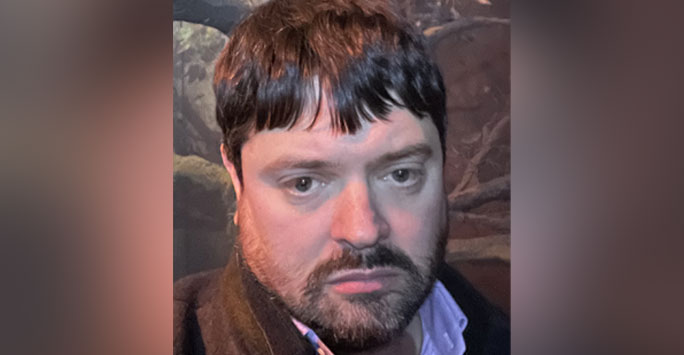Researcher in Focus: Dr Roland Clark
Posted on: 12 August 2024 by Dr Roland Clark in 2024 Posts

In this edition of 'Researcher in Focus', we are pleased to feature Dr Roland Clark, a Reader in the Department of History. In this blog, Roland tells us all about his fascinating research into far-right extremism, fascism and religion in interwar Europe.
Dr Roland Clark talks about the history of fascism, its recent resurgence and how it can be tackled in our Researcher in Focus podcast. Listen below:
As someone who is interested in the lived experiences of people who joined fascist movements, one of the depressing things about my research is that whenever it becomes relevant that’s always a bad sign.

Image: BBC and Getty Images
The recent wave of riots across England are frustrating reminders of how the British Union of Fascists used scuffles with anti-fascists to get newspaper headlines, and the support for far-right parties in European elections looks a lot like the way that people turned against mainstream politicians who consistently ruled in their own interests rather than in the interests of ordinary people.
My first book, 'Holy Legionary Youth, Fascist Activism in Interwar Romania', looked at rank and file activists in a Romanian fascist movement known as the Legion of the Archangel Michael. I found that people who joined the Legion often had siblings, parents or flatmates in the movement, and that violence helped make the movement more popular in some circles.
Legionaries who killed their political opponents or who vandalized synagogues and Jewish businesses were portrayed as brave youth fighting for the future of their nation. When they were persecuted and brutalized by the police, this made them into heroes and martyrs. The Legion was often illegal, so sometimes parents and friends shunned legionaries as ‘thugs’, while other families were proud of their children for standing up for what they believed was right.
Young intellectuals were attracted to the movement because it seemed edgy and exciting, but also because they were disillusioned with the country’s corrupt political culture and with not being able to break into the closed ranks of academia. Fascists did not talk much about women, but they were crucial to the movement’s success because they cooked at legionary gatherings, sewed fascist uniforms, carried secret messages, supported activists in prison, and sold homemade goods to raise money for the movement.
Fascism across Europe
More recently, I worked on a project with Professor Tim Grady at the University of Chester, where we brought together 18 specialists on fascist movements across Europe and translated primary sources that reflected how fascists operated in different countries.
There were a lot of similarities: mostly these movements were full of young people, they glorified violence and muscular masculinity, they were disorganised and torn apart by internal squabbles, and they had rigid, hateful attitudes towards other people, especially towards Jews. As well as a book of primary sources called European Fascist Movements (Routledge, 2023), we also produced an exhibition at the Wiener Holocaust Library and a free app for Apple and Android that maps places where fascists were active in the 1920s and 1930s. We also ran an anti-extremism event with 200 high school students from across Liverpool, who we were shocked to find many had seen far too much racism in their schools and communities given how young they were.
Religion in Romania
I took a break from researching fascism for a while and wrote a book on religion in 1920s Romania, looking at how Orthodox, Catholic and Protestant churches learned from one another, squabbled and persecuted each other, and reacted to secular modernity in similar ways. Thanks to a Mid-Career Fellowship from the British Academy, I have spent the last year writing about a Romanian shepherd who had visions of God in 1935 and attracted hundreds of thousands of people to his remote village looking for healing.
I am planning on turning my attention back to the far-right once I finish my book on the shepherd, and this time I will look at a wave of antisemitic student riots that spread across universities in East-Central Europe in the 1920s. These students were trying to push Jews out of their universities, and they worked together with antisemitic professors and politicians to force university administrators to do whatever they wanted. The similarities with our present moment are terrifying, and I am hoping that understanding more about what motivated these students will help us combat antisemitism today.
Learn more about Roland’s teaching and research on his staff profile page and personal website.
Keywords: Researcher in Focus.